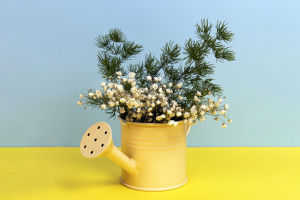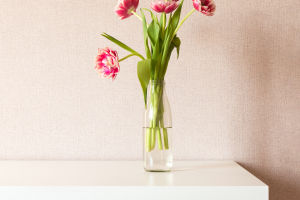Growing flowers indoors is a beloved hobby for many plant enthusiasts, yet it often comes with the challenge of dealing with yellowing leaves.
This issue can be perplexing, particularly when conventional wisdom suggests that the solution lies in adding fertilizer. However, sometimes the problem worsens after fertilizing. So, why does this happen?
Analysis of Common Causes of Yellow Leaves
1. Improper Watering
Improper watering is one of the most common causes of yellow leaves in indoor plants. This problem can arise from both overwatering and underwatering. To diagnose the issue, start by checking the soil moisture.
If the top layer of soil is dry but the lower soil remains wet, excessive watering may be causing water accumulation. This can lead to root rot, which in turn causes the leaves to turn yellow.
To remedy this, clean out the old potting soil, inspect the roots for rot, and trim any affected roots. Replant the healthy roots in fresh soil, ensuring good ventilation around the plant.
Conversely, if the soil has been dry for an extended period, the plant may not be receiving enough water. This drought stress causes the leaves to dry out and fall off. In this case, soak the plant by immersing it in water for 10 to 20 minutes.
This allows the soil to fully rehydrate. After soaking, place the plant in a well-ventilated area to continue the recovery process.
2. Insufficient Light
Another significant cause of yellow leaves is insufficient light. Plants rely on light for photosynthesis, and a lack of adequate light can lead to yellowing and stunted growth. If you notice that the leaves at the bottom of the plant are turning yellow and the overall plant looks weak, it might be a sign of insufficient light.
To address this issue, gradually increase the plant’s exposure to light. Avoid suddenly moving the plant to a location with intense sunlight, as this can cause further damage.
If your plant is positioned near a windowsill with only one side receiving sunlight, it may grow unevenly. To correct this, use gardening wire to adjust the plant’s position and rotate the flowerpot regularly. This ensures that the plant receives even light exposure on all sides.
3. Pests and Diseases
Pests and diseases can also lead to yellow leaves. When plants are infected with diseases, yellow or brown spots may appear on the leaves, which can eventually turn black and cause the leaves to rot.
In the case of pest infestations such as spider mites, the leaves may develop numerous yellow and brown spots, and you might notice fine spider webs on the undersides of the leaves.
To address these issues, promptly remove any diseased or infested leaves and branches. Improve the plant’s environment by enhancing ventilation and ensuring that moisture on the leaves does not linger.
Additionally, use appropriate fungicides or pesticides to address the specific disease or pest problem. For mild cases, common treatments include fungicides like mancozeb, thiabendazole, or copper-based products. For severe infestations, more potent options like abamectin or acephate may be necessary.
4. Unsuitable Temperature and Humidity
The temperature and humidity levels in the plant’s environment also play a crucial role in its health. An environment that is too dry can cause the tips of the leaves to turn yellow and become dry.
Increasing the humidity around the plant can help alleviate this issue. Using a humidifier is an effective solution. Alternatively, place a tray beneath the pot filled with pebbles and water. This setup helps to maintain higher humidity around the plant.
Avoid placing plants near direct sources of air such as air conditioners or heaters, as these can exacerbate dryness. In cold weather, it is crucial to keep plants away from cold drafts, as low temperatures can cause frostbite, resulting in yellow or water-soaked patches on the leaves. For plants affected by frostbite, remove the damaged parts and relocate the plant to a warmer, more stable environment.
5. Normal Aging of Leaves
Finally, it is important to acknowledge that the natural aging process of plant leaves can also cause them to turn yellow. It is entirely normal for older leaves to yellow and fall off as part of the plant’s growth cycle.
If yellowing is confined to older leaves and the rest of the plant appears healthy, there is generally no cause for concern. Maintaining proper care and attention to other aspects of plant health will ensure that the overall well-being of the plant remains unaffected.
By carefully diagnosing and adjusting these elements, you can effectively improve the growth environment for your plants, leading to a healthier and more vibrant indoor garden. With the right care and attention, your indoor plants can flourish and bring continued joy to your home.


